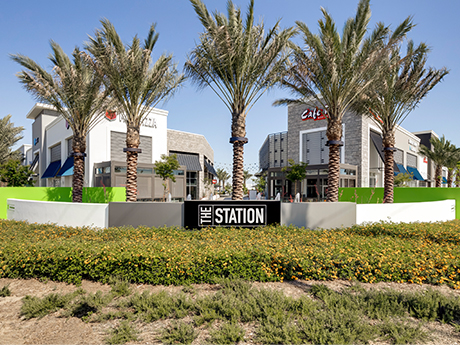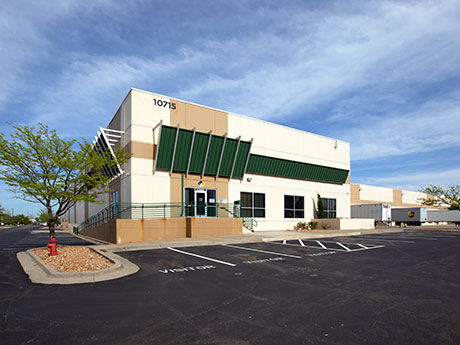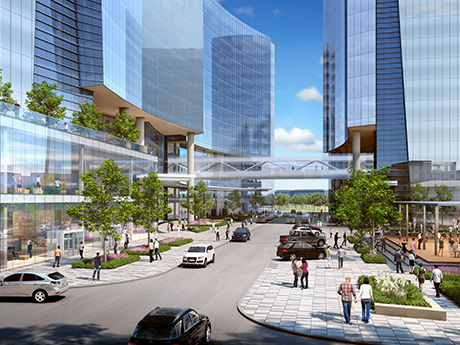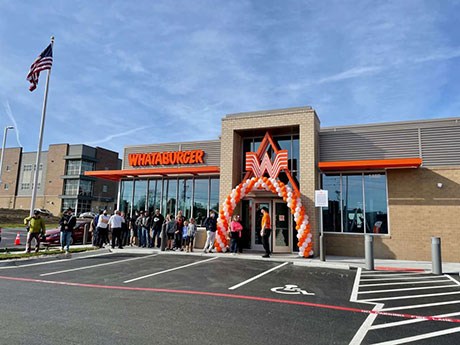By Jeffrey Mitchell, Principal Broker, Mountain West Commercial Real Estate Las Vegas experienced the second largest unemployment rate at the start of the COVID-19 pandemic in April 2020. Since then, the Las Vegas Metro has come a long way in recovering economically. It continues to see growth, particularly in the retail sector. Some key factors as to why Las Vegas has been on a continued trajectory of growth include the migration of residents, capital from across the country (with California being the primary source) and substantial tourism to the Vegas Strip. This has all fueled the flames for a hot Las Vegas that’s attracting investors, big box tenants and franchises looking to expand with a fury. The migration of California residents has helped increase residential growth by 2.2 percent in Clark County. California residents typically have a higher disposable income, which has flooded the housing market with prices increasing by 20.9 percent. New residents translate to new sales, which have also bolstered the food and beverage and retail markets by creating demand for more retail tenants around them. Ironically, high-end retailers have set records throughout the pandemic with their sales on the Strip. Other business owners have strategically managed PPE from the government or capital …
Market Reports
By Dan MacDavid, Principal, AO Mixed-use industrial has become a significant economic driver in the Inland Empire. Cities are benefiting from business synergies, additional tax revenue, high-quality design and civic engagement that builds community. The recent mixed-use trend can be attributed to one key change: the significant growth in size and scale of industrial master plans over the past few decades, combined with a new approach to industrial as a partial result of the pandemic. After the 2008 financial crisis, the U.S. economy has managed to make a comeback in ways that are unique and new to the commercial real estate industry, specifically in the mixed-use industrial sector. The Inland Empire — historically regarded as a key industrial market — saw record-level demand for industrial space as online sales surged during the pandemic. Some 19.1 million square feet of industrial space was leased in the fourth quarter of 2020. This was down slightly from 19.8 million square feet in the third quarter, according to JLL’s fourth-quarter market report. Despite 19.7 million square feet of new product being delivered in 2020, supply still lags demand. Data from the second quarter of 2020 shows there are no signs of slowing in this sector, particularly in …
2021 was a historic year for Kansas City industrial real estate. The local market size eclipsed 300 million square feet of space, representing the 16th-largest industrial market in the U.S. Class A building inventory is nearly 44 million square feet, ranking 15th in the nation. Of the industrial building inventory, 14.4 percent is Class A, ranking ninth-highest in the country, suggesting the inventory that we have is quality compared with other U.S. markets. Capital markets are firm influencers with soft voices. Nationally, the amount invested is a record high. Rental rate growth is at an all-time high and investors are confident that this growth will sustain. While you may not read about where capital is being deployed, the institutional development and investment activity provide the output to see where institutions have comfort. Cap rates in the Kansas City area broke records and saw compression in the last year of 50 to 150 basis points depending on the asset class. This is a result of investors seeking return and believing in the long-term strength of tier II industrial markets and yield premium afforded in these markets compared with gateway cities. Well-positioned assets traded with cap rates in the low to …
By Wes Drown, Broker Associate, REMAX Commercial The Las Vegas Valley continues to see growth in the demand, velocity, rates and a decline in incentives as Vegas bounces back. This is led by the return of our entertainment industries, which are almost to pre-COVID levels, in addition to the massive demand for housing and commercial construction. All you have to do is take a drive around the 215-Beltway to see that activity is everywhere. The news-grabbing projects that are seemingly announced weekly are once again turning heads. They’re attracting young college graduates and stimulating the needs for goods and services, almost to a pre-COVID level. Office construction is underway in earnest, with expansion in Summerlin, the SW “Curve” and West Henderson. High- and mid-rise office with parking structures are being leased up in the Westside areas, with predominantly single-story popping up in Henderson. Rates for suburban office products are pushing over $2.10 per square foot, per month, including operating costs. The spread between asking price and closed deals is shrinking significantly. Incentives are back to “normal” with landlords offering new carpet and paint, or maybe a partial month early occupancy rather than the free rent or step-up rents we’ve seen in the past. …
By Taylor Williams Office owners in Texas remain acutely aware of how the pandemic has changed the game and are not shying away from promoting health and wellness within their buildings. According to data from security firm Kastle Systems, which tracks keycard, fob and app access to some 2,600 office buildings across 138 cities and 47 states, office space in America’s largest markets continues to be underutilized. Across the 10 markets that Kastle Systems tracks, including Austin, Houston and Dallas, the average office occupancy rate in early December was 40.6 percent. Yet the three Texas markets all registered occupancy rates considerably above the national average — 59.3 percent, 54.9 percent and 52.3 percent, respectively — for Austin, Houston and Dallas. A more temperate climate in Texas could bear some responsibility for these above-average performances, given that access to functional outdoor spaces has undeniably become a key tenant demand during the pandemic. Along those lines, tenants have understood for some time now that successfully bringing their employees back to their offices is somewhat contingent on making sure those workers feel safe on the job. The onus, therefore, has fallen on office owners to ensure that their buildings have protocols through which …
The Washington, D.C., and Baltimore markets, when combined, represent the fourth-largest metropolitan region in the nation by population, and retailers are taking notice again. Grocery-anchored projects are the most prevalent in the headlines. For example, the first of nearly 20 Amazon Fresh locations has opened in the area. Additionally, Wegmans’ smaller format rollout plan is active with its first location in Stonebridge’s Carlyle Crossing in Alexandria opening spring 2022, along with Roadside Development’s City Ridge Project at the former Fanny Mae Headquarters in Northwest D.C. Former Shoppers Food Warehouse boxes also continue to get absorbed by new grocers. A less-covered sector of the grocery market is the international markets category, which remains very active in the region. There are 29 different banners across the region that exceed 10,000 square feet in size, with the newest entrant being Oh! Markets in Northern Virginia. Other international market newcomers, including 99Ranch and Enson Market, are also searching for space. With the immense ethnic diversity of the region, we expect investors to start taking notice of this sector with their acquisition appetite, just as they have in other regions like Texas and Florida. Publix, a customer favorite, is in the early stages of identifying …
To the surprise of many in the Kansas City retail sector, the end of 2021 looked much different than most anticipated when 2021 began. As uncertainty buzzed through the retail world, the flurry of 2021’s real estate activity was a welcome surprise. Retailers who embraced technology and adapted to the changing circumstances of today’s world were able to reap the benefits 2021 offered. As consumers took advantage of post-lockdown freedoms, brick-and-mortar retailers experienced a surge in sales volume. Throughout 2021, many national retailers and local Kansas City owners reported volumes exceeding 2019 pre-COVID levels. It’s comforting to report that retail leasing and sales continue to be strong, and overall Kansas City remains consistent in attracting retail business during these uncertain times. One of the most recognizable transformations in retail is the way in which technology seamlessly connects e-commerce and brick-and-mortar stores. Consumers can now use technology to satisfy their desire for the contactless fulfillment of their order, browse local inventory at grocery and retail stores for immediate pickup and grocery shop without entering the store. This list will continue to grow as acceptance of the technology accelerates. Another noticeable retail alteration is the addition of drive-thrus as well as …
By Tim Reid, First Vice President, CBRE Boise’s retail market continues to show signs of resiliency in the wake of a global downturn caused by the pandemic. Though retail companies pivoted their business models to accommodate social distancing policies and provide contactless options last year, many were still forced to close their doors. The retail outlook is now much brighter after the industry experienced an incredibly turbulent year. Beginning in April, Idaho’s year-over-year retail sales rebounded 56.3 percent after dropping to 22.7 percent in 2020. Much of that progress can be attributed to Idaho’s strong fundamentals, including the state’s robust population growth. Idaho led the nation as the second-fastest growing state in the past decade, adding 17.3 percent to the population from 2010 to 2020. This state also houses several of the fastest-growing cities in the nation. While much of the migration to Boise City came from within the state, relocations from the West Coast — namely, California, Washington and Oregon — surged, accounting for 17.5 percent of last year’s growth. Those moving tend to be young, affluent, childless professionals seeking urban locations. While this migration pattern is not new, relocations to the Treasure Valley were amplified by the pandemic. These dynamics …
By Tad Loran, Vice President, Retail Specialist, Avison Young | Western Alliance Commercial Inc. The Reno retail market was hard hit overall by the pandemic, with the service industry at the top of the list. Some notable businesses that closed in Reno last year include Santa Fe Basque Restaurant, Truckee River Bar & Grill, An — Asian Kitchen & Bar, Little Nugget Diner, True NY Pizza Co., Rounds Bakery Storefront, Jos A. Bank, St. James Infirmary, 24 Hour Fitness and Pier 1 Imports. Big box national retailers picked up virtually no new space in 2020. The good news is retail demand and leasing activity has rebounded this year. Northern Nevada’s retail vacancy rate saw positive absorption. It currently sits at 5.8 percent, while asking rental rates have increased. They are currently at $19.08 per square foot (triple net) on an annual basis for second-generation space and $42 per square foot (triple net) on an annual basis for new construction. Notable business openings this year include Sport Clips, the Human Bean, C-A-L Ranch, In-N-Out Burger, Starbucks, Chipotle, Firehouse Subs, Truckee Bagel, Base Camp Pizza, SUP and Chase Bank. Commercial sales in Northern Nevada were nominal in 2020. This was driven by the pandemic, a lack of …
Atlanta remains an incredibly active market for multifamily demand from both a renter and investor standpoint. The Atlanta metropolitan statistical area (MSA) boasts a population estimate by the U.S. Census Bureau of more than 6.1 million people, an increase of 14.3 percent over the past 10 years, and ranks consistently as one of the top recipients of in-migration in the country. The continued influx of new residents and rising home pricing have led to a vacancy rate of 4.9 percent, the lowest recorded in the MSA since 2000. In the third quarter, rents reached the highest average in Atlanta’s history of $1,561 per unit, an increase of 21.3 percent year-over-year. While on average apartment communities tend to see an average occupancy rate around 95 percent, eviction moratoriums have pushed occupancies at many to as high as 99 percent leased as property managers seek to make up for lost revenue. Residents are flocking toward urban infill projects in walkable parts of the city, such as in the micro-market along the Atlanta BeltLine Eastside Trail where effective rents reached $2,052 per unit, commanding a 31.5 percent premium over the metro Atlanta average. However, there has also been substantial rent growth recorded in …











